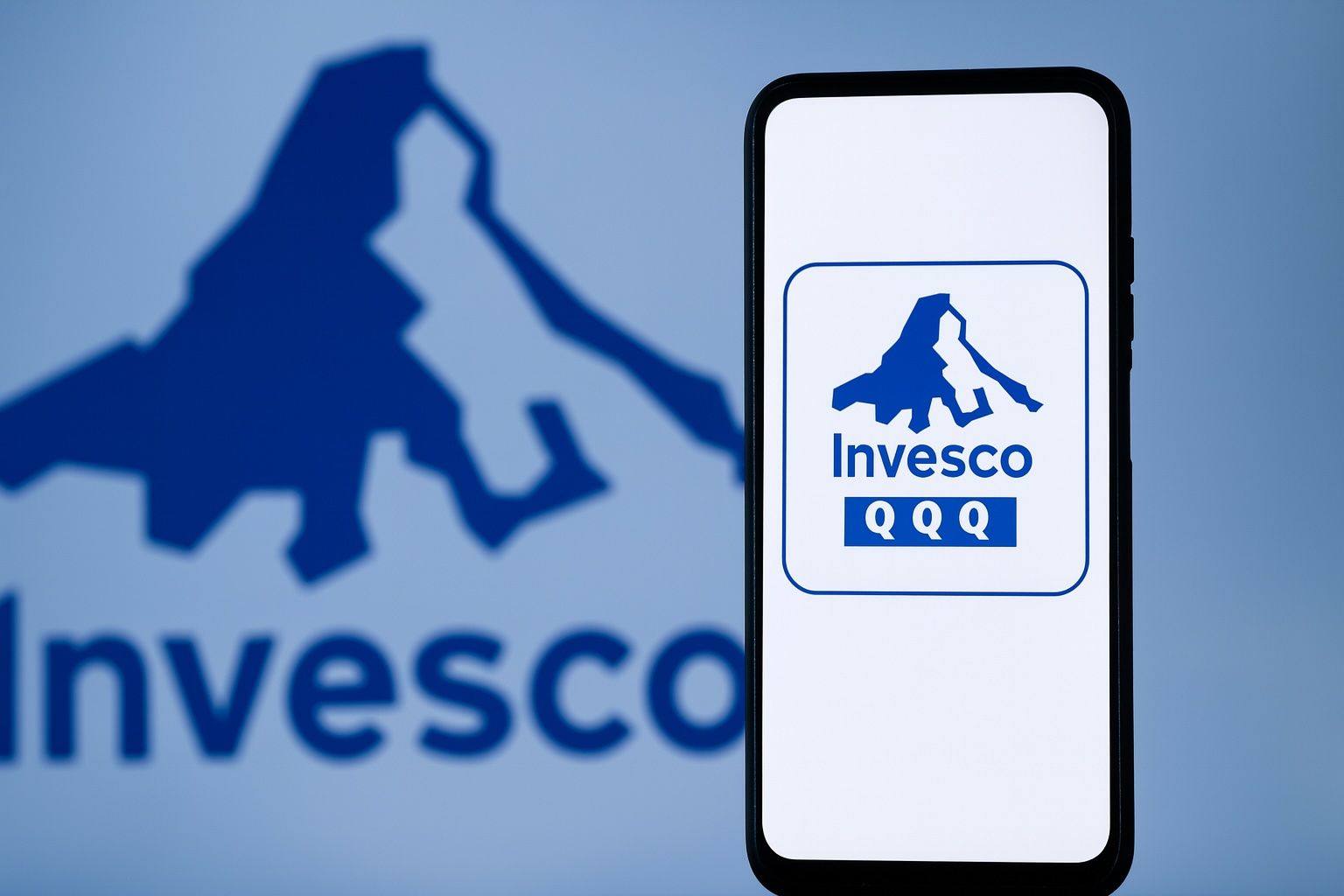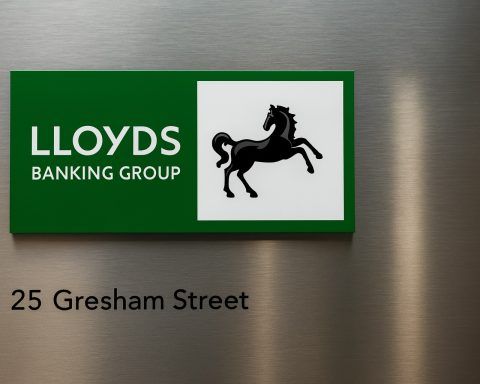The Invesco QQQ Trust (NASDAQ: QQQ), the flagship ETF tracking the Nasdaq‑100 Index, finished Monday lower as Wall Street pulled back from record territory and traders braced for a crucial week of Nvidia earnings, big‑box retail results, and a long‑delayed U.S. jobs report.
QQQ closed at $603.66, down about 0.85% on the day, giving back early pre‑market gains and mirroring a broader tech‑led retreat that sent the Nasdaq down roughly 0.8%. [1]
Key Takeaways for QQQ on November 17, 2025
- Price action: QQQ fell to $603.66, a drop of about $5.20 (-0.85%), with an intraday low near $600 and a high around $615.12.
- Context: The pullback came as the Dow, S&P 500 and Nasdaq all finished down around 1%, breaking below key moving averages for the first time since April. [2]
- Catalysts: Investors are de‑risking ahead of Nvidia’s earnings on Wednesday, a heavy slate of delayed economic reports, and a long‑awaited September jobs report. [3]
- Macro backdrop: Fed officials Waller and Jefferson signaled concern about a weakening labor market and inflation near 3%, while still framing tariffs as a one‑off price shock and supporting earlier rate cuts. [4]
- Sentiment and flows: Retail “buy‑the‑dip” enthusiasm is fading, with Vanda and BofA noting reduced retail buying of broad ETFs like QQQ, even as large institutions remain heavily invested. [5]
QQQ Stock Price Today: How the Nasdaq 100 ETF Traded
QQQ spent Monday under pressure almost from the opening bell:
- Open: about $606.13
- High: roughly $615.12
- Low: near $600.00
- Close: $603.66
- Volume: about 63 million shares, indicating active trading as investors repositioned ahead of the week’s big catalysts.
According to TipRanks data cited earlier in the day, QQQ is up roughly 19.6% year‑to‑date, even after a 1.7–1.8% pullback over the past five sessions, underscoring that Monday’s slide comes after a powerful multi‑month rally. [6]
From a valuation and risk standpoint, GuruFocus estimates QQQ’s market cap near $400 billion, with a P/E around 36, P/S near 20, and a beta of about 1.14, reflecting its growth‑heavy, slightly more volatile profile versus the broader market. [7]
Why QQQ Fell Today: Nvidia Jitters, Jobs Data and AI Valuation Fears
Today’s move in QQQ was less about a single stock and more about macro nerves colliding with AI‑driven expectations.
1. Nvidia at the center of the story
Nvidia, now the world’s most valuable company and the central symbol of the AI trade, reports earnings after the bell on Wednesday. [8]
- Reuters and Investopedia both note that Nvidia shares fell around 1.8–1.9%, making it one of the biggest drags on the Nasdaq and S&P 500 today as investors trimmed exposure ahead of the print. [9]
- Barchart’s midday read showed the Nasdaq 100 (tracked by QQQ) down about 0.46%, with markets laser‑focused on what Nvidia will say about AI demand and spending. [10]
Because Nvidia, Microsoft, Apple, Alphabet, Amazon and Meta together make up a large share of QQQ’s weight, any wobble in AI sentiment tends to show up quickly in the ETF.
2. Data “onslaught” and a delayed jobs report
Monday also kicked off what Reuters called an “onslaught” of delayed U.S. economic data, capped by the long‑postponed September jobs report later this week, after a 43‑day government shutdown froze key releases. [11]
- Futures and intraday moves reflected growing anxiety: Nasdaq 100 futures were down pre‑market, and leveraged QQQ products like TQQQ and SQQQ ranked among the most active names on Nasdaq’s early‑session list. [12]
- The delayed data complicate the Fed’s job and add uncertainty to the rates outlook, which tends to increase volatility in growth and tech names—exactly what dominates QQQ. [13]
3. Indices break technical support
Reuters reported that the Dow, S&P 500 and Nasdaq all closed below their 50‑day moving averages, a level many traders view as a proxy for the intermediate trend. Losses accelerated once those thresholds gave way in afternoon trading. [14]
Investopedia’s live coverage put today’s declines at about 1.2% for the Dow, 0.9% for the S&P 500 and 0.8% for the Nasdaq, with the tone shifting from “cautious optimism” at the open to broad risk‑off by the close. [15]
That technical breakdown encourages short‑term traders to lighten risk, putting additional pressure on QQQ, which already tends to move more than the broad market because of its growth tilt.
Macro Backdrop: Fed Signals, Tariffs and a “Healthy Reset”
Today’s move in QQQ doesn’t happen in a vacuum. The macro narrative around rates, inflation and valuations is evolving quickly.
Fed officials stress weak labor data and tariff shock
Two key Fed speeches dropped today:
- Governor Christopher Waller argued that despite missing government data, private indicators show a labor market that is “weak and near stall speed”, with underlying inflation close to the Fed’s 2% target once tariff impacts are stripped out. He explicitly backed another 25 bps rate cut at the December meeting as a risk‑management step, citing concerns about weaker demand and pressure on lower‑ and middle‑income households. [16]
- Vice Chair Philip Jefferson, speaking in Kansas City, described growth as moderate but weighed down by the shutdown, and said the balance of risks has shifted toward downside risks to employment, with inflation still just under 3% and heavily influenced by tariffs. He supported last month’s cut and sees policy as still somewhat restrictive, arguing for a slow, data‑dependent approach from here. [17]
For QQQ, lower‑for‑longer rates are typically supportive, but the reason rates are being cut—slowing growth and a softer labor market—can also challenge lofty earnings expectations for high‑multiple tech.
Invesco: not a bubble, but a reset
On the same day, Invesco’s own strategists described the recent sell‑off as a “healthy reset, not a bursting stock bubble”, following an almost uninterrupted 38% rally in U.S. equities from the April 8 bottom to late October. [18]
They argue:
- The unwind has been concentrated in mega‑cap growth names—the same group that powered the rally.
- Earnings from many of those firms have actually been strong; it’s valuation skepticism, not broken business models, driving the pullback.
- As the Fed eases and fiscal support remains robust, market leadership could broaden beyond mega‑caps to more cyclical, value‑oriented and smaller‑cap stocks. [19]
That view matters for QQQ holders: if leadership broadens, QQQ may still participate, but returns could be less dominated by the “Magnificent 7” than in past years.
Tariffs, inflation and the Trump backdrop
A separate note from Motley Fool framed President Trump’s recent tariff reductions as potentially positive for inflation and consumer purchasing power, suggesting some relief from the price pressures that have dogged households. [20]
Fed officials, however, continue to treat tariffs largely as a one‑time price‑level shock rather than a new, persistent wave of inflation, reinforcing the idea that the rate‑cutting cycle can continue—another medium‑term support for growth assets like QQQ. [21]
Positioning and Sentiment: Retail Investors Step Back, Institutions Stay In
QQQ’s behavior today also reflects who is buying—and who isn’t.
Retail “buy the dip” trade is losing steam
A fresh Reuters analysis finds that retail investors are showing less conviction in buying U.S. stock market dips, after being a crucial force behind this year’s rally. [22]
Key points from that report:
- Vanda Research notes that retail investors have shifted away from single‑stock speculation and into broad ETFs like SPY and QQQ as a “safety blanket” during periods of anxiety—but even those ETF inflows have faded in recent days. [23]
- BofA Securities says retail investors were net sellers of equities for the first time since late September, with institutions now dominating ETF flows. [24]
For QQQ, that means one of the most reliable sources of dip‑buying—everyday investors piling into big tech—may not be as supportive on pullbacks as it was earlier in the year.
Institutions remain deeply committed to QQQ
On the other side, MarketBeat’s latest institutional‑ownership snapshot highlights how embedded QQQ is in professional portfolios: [25]
- Adaptive Financial Consulting LLC still counts QQQ as its sixth‑largest position, even after trimming its stake by about 4.8% in the second quarter.
- Other big players, including Goldman Sachs, have sharply increased their QQQ exposure, and overall hedge funds and institutions hold roughly 45% of the ETF’s shares outstanding. [26]
In other words, while retail enthusiasm moderates, institutional capital remains heavily tied to the Nasdaq‑100 theme, which can both stabilize QQQ over time and magnify moves when large players rebalance.
Technical Picture: Key Levels for QQQ to Watch
From a technical perspective, Monday’s close put QQQ right on top of some important levels.
Pivot zones and moving averages
GuruFocus’ DeMark‑based analysis pegs QQQ’s pivot high at $619.20 and pivot low at $603.02. [27]
- With QQQ closing at $603.66, the ETF finished just above that pivot low, underscoring how finely balanced sentiment is right now. [28]
- The same analysis and MarketBeat’s profile place the 50‑day simple moving average around the mid‑$605 range, not far from the closing price, while the 200‑day average sits closer to the mid‑$560s—still comfortably below. [29]
Momentum gauges remain neutral: an RSI in the mid‑40s suggests neither overbought nor oversold conditions, consistent with a consolidation phase rather than a full‑blown breakdown. [30]
Longer‑term range
MarketBeat data show a 52‑week range from roughly $402 to $637, putting today’s close nearer the upper half of that band despite the recent pullback. [31]
For traders, that combination—premium valuations, but still‑intact longer‑term uptrend—helps explain why QQQ reacts so sharply to any hints that AI spending or macro data might disappoint.
Analyst and ETF Research Views on QQQ
Despite the near‑term chop, ETF and analyst research remains broadly constructive:
- TipRanks’ ETF consensus rates QQQ a “Moderate Buy”, with an average price target around $717, implying roughly 18% upside from current levels if earnings and the macro backdrop cooperate. [32]
- GuruFocus highlights robust underlying metrics among QQQ’s constituents, including three‑year earnings growth north of 25% and healthy profitability, even as valuation ratios remain well above market averages. [33]
- Separately, ETF education pieces continue to stress QQQ’s role as a core vehicle for AI and tech exposure, with AI still “top of mind” for both companies and investors. [34]
At the same time, some services and commentators caution that there may be better risk‑reward opportunities in more focused or value‑tilted strategies, and at least one Motley Fool note today pointed out that QQQ did not make its list of top 10 stock ideas. [35]
What to Watch Next for QQQ
For anyone following QQQ into the rest of the week, several catalysts stand out:
- Nvidia earnings (Wednesday after the close)
- Guidance on AI data‑center demand, capex trends and margins could reset expectations for the entire Nasdaq‑100 complex. [36]
- Delayed September jobs report (Thursday)
- After the shutdown‑induced blackout, this report will heavily influence how much room the Fed has to keep cutting without spooking markets about growth. [37]
- Big retail earnings (Walmart, Home Depot, Target and others)
- These results offer a reality check on the consumer’s health, which both Fed speeches and market strategists now flag as a key risk. [38]
- Fed communications into the December meeting
- Markets currently price in a meaningful chance of another rate cut in December. Any shift in tone—dovish or hawkish—could quickly ripple through QQQ’s valuation multiples. [39]
- Retail‑investor sentiment and ETF flows
- If retail dip‑buying continues to fade while institutional investors rebalance after such a strong year, volatility in QQQ could remain elevated. [40]
Bottom Line
On November 17, 2025, QQQ’s 0.85% drop is less a collapse and more a stress test of a crowded, AI‑heavy trade facing big macro and earnings questions all at once.
- The underlying trend is still up on a year‑to‑date basis. [41]
- The macro backdrop is shifting toward slower growth but easier policy, a mix that can be both a tailwind and a valuation challenge for high‑multiple tech. [42]
- Sentiment is more fragile, with retail investors less eager to “buy the dip” and institutions dominating QQQ flows. [43]
For now, QQQ sits at a critical technical and psychological crossroads, just above key pivot support and 50‑day averages, with the next big move likely to be dictated by Nvidia’s numbers and the long‑delayed jobs data—rather than by today’s selling alone.
As always, this article is for informational and news purposes only and does not constitute personalized investment advice. Anyone considering QQQ or related strategies should weigh their own risk tolerance, time horizon, and financial situation, and consult a qualified professional if needed.
References
1. www.investopedia.com, 2. www.reuters.com, 3. www.reuters.com, 4. www.federalreserve.gov, 5. www.reuters.com, 6. www.tipranks.com, 7. www.gurufocus.com, 8. www.reuters.com, 9. www.reuters.com, 10. www.nasdaq.com, 11. www.reuters.com, 12. www.nasdaq.com, 13. www.federalreserve.gov, 14. www.reuters.com, 15. www.investopedia.com, 16. www.federalreserve.gov, 17. www.federalreserve.gov, 18. www.invesco.com, 19. www.invesco.com, 20. www.nasdaq.com, 21. www.federalreserve.gov, 22. www.reuters.com, 23. www.reuters.com, 24. www.reuters.com, 25. www.marketbeat.com, 26. www.marketbeat.com, 27. www.gurufocus.com, 28. www.gurufocus.com, 29. www.gurufocus.com, 30. www.gurufocus.com, 31. www.marketbeat.com, 32. www.tipranks.com, 33. www.gurufocus.com, 34. www.etftrends.com, 35. www.nasdaq.com, 36. www.cityindex.com, 37. www.reuters.com, 38. www.reuters.com, 39. www.nasdaq.com, 40. www.reuters.com, 41. www.tipranks.com, 42. www.federalreserve.gov, 43. www.reuters.com



![Plug Power (PLUG) Today: Q3 Results Set the Stage for a $275M Liquidity Pivot, Data‑Center Push, and Fresh Analyst Calls [Nov 11, 2025] Plug Power (PLUG) Today: Q3 Results Set the Stage for a $275M Liquidity Pivot, Data‑Center Push, and Fresh Analyst Calls [Nov 11, 2025]](https://ts2.tech/wp-content/uploads/2025/11/Plug-Power-Inc.-PLUG-1-480x384.jpg)



